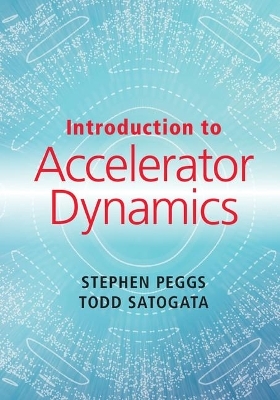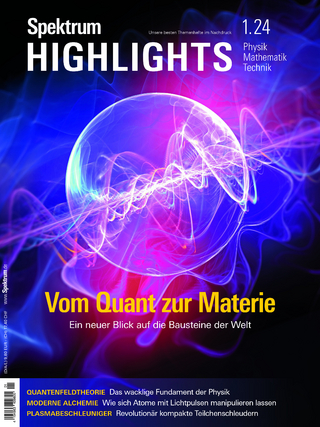
Introduction to Accelerator Dynamics
Cambridge University Press (Verlag)
978-1-107-13284-9 (ISBN)
How does a particle accelerator work? The most direct and intuitive answer focuses on the dynamics of single particles as they travel through an accelerator. Particle accelerators are becoming ever more sophisticated and diverse, from the Large Hadron Collider (LHC) at CERN to multi-MW linear accelerators and small medical synchrotrons. This self-contained book presents a pedagogical account of the important field of accelerator physics, which has grown rapidly since its inception in the latter half of the last century. Key topics covered include the physics of particle acceleration, collision and beam dynamics, and the engineering considerations intrinsic to the effective construction and operation of particle accelerators. By drawing direct connections between accelerator technology and the parallel development of computational capability, this book offers an accessible introduction to this exciting field at a level appropriate for advanced undergraduate and graduate students, accelerator scientists, and engineers.
Stephen Peggs is a Senior Scientist at Brookhaven National Laboratory, New York, and an Adjunct Professor of Physics at the State University of New York, Stony Brook, where he was closely involved in building and commissioning the Relativistic Heavy Ion Collider (RHIC). He has worked internationally on a variety of accelerators, including the Cornell Electron Storage Ring, the Super Proton Synchotron collider at CERN, the Superconducting Super Collider in Texas, the Tevatron and the Main Injector at Fermilab, and the European Spallation Source in Sweden. He is a Fellow of the American Physical Society. Todd Satogata is a Senior Physicist at the Center for Advanced Studies of Accelerators at the Thomas Jefferson National Accelerator Facility (Jefferson Lab) and a Jefferson Lab Professor at the Centre for Accelerator Science at Old Dominion University, Virginia. During his career he has worked on the commissioning, design, building, and operation of the Relativistic Heavy Ion Collider at the Brookhaven National Laboratory, New York, and commissioning and operation of the 12 GeV CEBAF upgrade at Jefferson Lab, in addition to developing medical accelerators, proton beam imaging techniques, and accelerator control systems.
Preface; 1. Introduction; 2. Linear motion; 3. Strong focusing transverse optics; 4. Longitudinal and off-momentum motion; 5. Action and emittance – one particle or many?; 6. Magnets; 7. RF cavities; 8. Linear errors and their correction; 9. Sextupoles, chromaticity and the Hénon map; 10. Octupoles, detuning and slow extraction; 11. Synchrotron radiation – classical damping; 12. Synchrotron radiation – quantum excitation; 13. Linacs – protons and ions; 14. Linacs – electrons; 15. The beam-beam interaction and 1-D resonances; 16. Routes to chaos; Appendix: selected formulae for accelerator design; References; Index.
| Erscheinungsdatum | 17.08.2017 |
|---|---|
| Zusatzinfo | Worked examples or Exercises; 6 Tables, black and white; 4 Halftones, black and white; 95 Line drawings, black and white |
| Verlagsort | Cambridge |
| Sprache | englisch |
| Maße | 179 x 254 mm |
| Gewicht | 580 g |
| Themenwelt | Naturwissenschaften ► Physik / Astronomie ► Hochenergiephysik / Teilchenphysik |
| ISBN-10 | 1-107-13284-3 / 1107132843 |
| ISBN-13 | 978-1-107-13284-9 / 9781107132849 |
| Zustand | Neuware |
| Haben Sie eine Frage zum Produkt? |
aus dem Bereich


